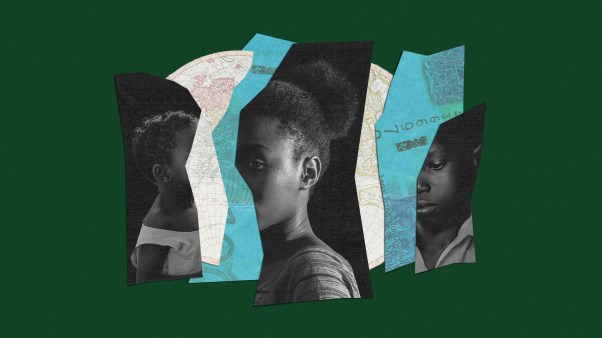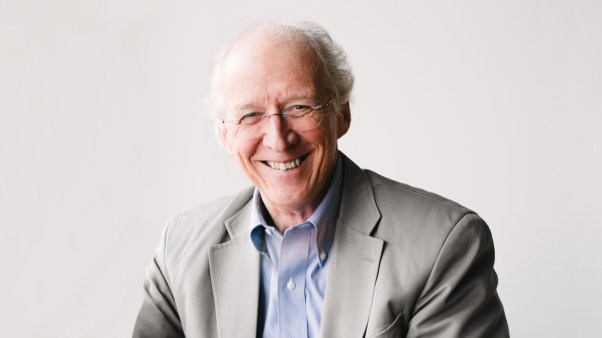Trent Broussard realized that his son had perfect pitch when the eight-year-old called him out during a worship set. “That’s the wrong key!” his son shouted over and over as Broussard sang a version of Hillsong’s “Mighty to Save.”
Broussard’s son was diagnosed with autism at age three. The Centers for Disease Control estimate that 1 in 31 children in the US have some form of autism, and studies have shown kids with the condition are half as likely to attend religious services.
Broussard said inclusion of people with neurodivergence can challenge people’s expectations for what a Sunday service should feel like.
“You may very well get outbursts in the middle of a service,” said Broussard, now an assistant professor of music at Williams Baptist University.
“We used to get death stares when my son would yell out in church. But we were lucky to have leadership who told us, ‘You’re doing nothing wrong; we want him here, just as he is.’ How I wish that would happen everywhere.”
Broussard belongs to a growing group of scholars studying the experiences of neurodivergent people in corporate worship. He wrote his dissertation about the inclusion of people with autism in corporate worship in Southern Baptist churches—in hopes that planning worship with neurodiversity in mind can enrich and enliven the life of the church.
“Most churches that don’t seem very open or accommodating just haven’t had the opportunity to see that things can be done differently,” he said. “We sing about a gospel that is available for all people, of all shapes, forms, and fashions. If our worship doesn’t include all people, that calls into question whether we believe the things we profess about God.”
The emphasis on order in church worship can hinder efforts to make room for neurodivergent people, said Nathan Myrick, assistant professor of church music at Mercer University and the director of a new initiative funded by the Lilly Endowment that aims to study and enhance worship for neurodivergent children through the arts.
Myrick recommends a more flexible approach.
“Neurodiversity in our communities can reveal our fear of being out of control,” said Myrick. “So much of our polity and rituals are about exerting control.”
That’s not to say that there is no value in having some expectations about appropriate behavior in the context of corporate worship, Myrick added. “There is value in learning to participate, but our expectations are overwrought and unrealistic.”
Myrick and Broussard both noted that, for many churches, emphasis on production and a seamless flow of service can discourage or reject interruptions. And while it’s reasonable to want Sunday morning worship to include times of meditation, prayer, and corporate reading, churches can still let families know that everyone is welcome, even those who struggle to stay still or quiet.
Sunita Theiss and her seven-year-old son have autism; she has written about the challenges of participating in the life of the local church as a neurodivergent parent with children on the spectrum.
Theiss points out that every church offers accommodations of some kind for certain populations, though they may not be explicitly labeled “accommodations.”
“Lots of churches have hearing augmentation or special family-friendly services and events,” she said. “I was recently at a church that had rocking chairs in the back for mothers of young children. My Anglican church doesn’t use incense because we have older congregants who are sensitive to strong smells. Those are accommodations, whether we call them that or not.”
Theiss says churches that are just starting to take a closer look at the ways their worship practices might exclude those with neurodivergence would benefit from looking at the things they already do to accommodate the needs of their community.
“All of us have an internal line that we’ve drawn,” said Theiss. “We’re willing to accommodate to a point, but not past that. Each person has their own line, and frequently, for neurodivergent people, the lines are just different.”
Theiss and Broussard both point out that many adjustments that can help neurodivergent people aren’t complicated or expensive but go a long way in showing welcome. Broussard says that even a simple printed order of service can help some attendees feel more at ease.
For younger children, he suggests “first, then” charts—simple, graphic depictions of the order of events. Theiss says that having a few freely available tools like fidget toys and noise-reducing headphones helps families with neurodiverse members feel seen and accepted.
Broussard also says that churches with bigger production budgets should carefully consider how they use lighting during services.
“When you go to a theater, you’ll see warning signs about things like strobe lights and flashes,” he said. “Lighting is a great tool, but we shouldn’t need that warning for corporate worship.”
Noise sensitivity is a common characteristic among neurodivergent people. While worship volume can be a sore spot for musicians, serving the community may mean giving up the goal of trying to recreate the immersive worship concerts modeled by megachurches like Hillsong and Bethel. Churches may opt to have separate services or spaces to serve those who prefer a quieter mode of worship.
There are many unique profiles and needs that accompany neurodivergence, and advocates acknowledge that it’s impossible to perfectly accommodate everyone.
“We have a sensory mismatch in my own house. I have one kid who needs to wear headphones for the other one to enjoy loud music,” Theiss said. “In a church, multiply that by 100. You aren’t going to be able to accommodate everyone, but you can have some tools available.”
Emma Friesen, a graduate of Duke University who is entering graduate school to study occupational therapy, experiences sensitivity to loud noises and has felt firsthand the strain of participation in corporate worship.
“Congregants having seemingly conflicting needs in regard to the corporate worship service makes me think of the miracle of the loaves and fishes,” said Friesen. “In that story, there is enough for everyone, and sometimes that can feel far away from our day-to-day lives.”
Friesen says that one way churches can start making more room is by intentionally choosing messiness and welcoming mistakes.
“Creating a culture of informality can go hand in hand with creating a welcoming community,” said Friesen. “At my church, I like how it is not uncommon for a worship leader to pause the sermon because of a passing train or do something like restart a song.”
Broussard also sees value in cultivating communities that actively push against the tendency to platform and celebrate attractiveness and polish.
“There are churches where everybody on the platform falls into the ‘beautiful people’ category,” said Broussard. “You can see this corporate mindset that it’s more important to have something attractive than it is to honor the dignity of all humans.”
Secretary of Health and Human Services Robert F. Kennedy Jr. has been criticized recently for making broad claims about the nature of autism spectrum disorder and for saying that autism “destroys lives.” Myrick says that a Christian view of neurodivergence ought to be one that treats its many expressions as examples of the diversity and vibrancy in creation.
“There’s a theological through line from Genesis to Revelation of the expanse of creation and God’s vision for humanity as fruitful and diverse,” Myrick said.
A gracious, openhanded set of worship practices that emphasize flexibility and freedom can help make the church auditorium or sanctuary a place where more of the body of Christ can gather. In churches that make no attempt to accommodate neurodivergence, what appears to be order and organization might actually be homogeneity.
“Contemplating how God might be relating to those in our community who have significant cognitive disabilities can help push our theology towards a bigger view of God’s grace,” said Friesen. “I think that is good news.”


















